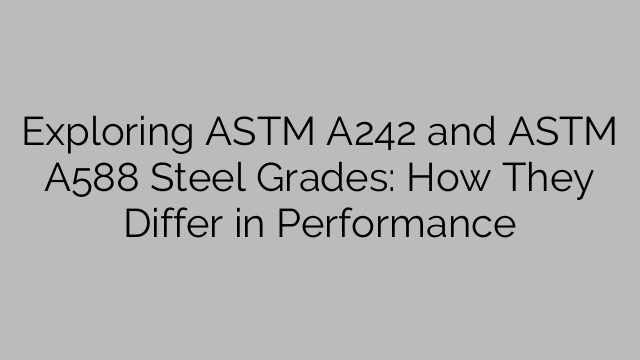When it comes to construction and structural engineering, steel is an essential material. Various steel grades are available, each with its own set of properties and advantages. Two commonly used steel grades in structural applications are ASTM A242 and ASTM A588.
ASTM A242 and ASTM A588 are both atmospheric corrosion-resistant steel grades commonly used in outdoor applications such as bridges, buildings, and other structures. However, they differ in terms of their composition, mechanical properties, and overall performance.
First, let’s explore ASTM A242 steel. This grade is a high-strength low-alloy structural steel specifically designed for corrosion resistance. It contains copper, chromium, nickel, and other alloying elements. The addition of copper gives ASTM A242 steel its unique ability to form a protective oxide film, known as patina, when exposed to the atmosphere. This patina slows down the rate of corrosion, making ASTM A242 steel an excellent choice for outdoor structures.
On the other hand, ASTM A588 steel is primarily alloyed with copper, phosphorus, and chromium. Similar to ASTM A242, the copper content in ASTM A588 steel enhances its corrosion resistance. However, ASTM A588 steel is known for its higher tensile strength compared to ASTM A242 steel, making it suitable for applications that require greater strength.
Both ASTM A242 and ASTM A588 steel grades offer excellent atmospheric corrosion resistance, allowing them to withstand harsh outdoor conditions such as rain, snow, humidity, and varying temperatures. These steel grades are often used in unpainted applications, as the natural rust-like appearance of the patina provides a protective barrier against further corrosion.
When it comes to mechanical properties, ASTM A242 steel has a minimum yield strength of 50,000 psi, a minimum tensile strength of 70,000 psi, and a minimum elongation of 21%. On the other hand, ASTM A588 steel has a minimum yield strength of 50,000 psi, a minimum tensile strength of 70,000 psi, and a minimum elongation of 18%.
While both steel grades offer similar corrosion resistance and overall performance, the main difference lies in their mechanical properties. ASTM A588 steel provides slightly higher strength and is often chosen for applications that require a higher load-carrying capacity.
In conclusion, ASTM A242 and ASTM A588 are two popular steel grades used in outdoor applications where corrosion resistance is essential. Both grades offer excellent corrosion resistance and durability. ASTM A242 is known for its ability to form a protective oxide film, while ASTM A588 provides higher strength. Ultimately, the choice between the two depends on the specific requirements of the project and the desired mechanical properties. Nonetheless, both grades are reliable choices for a wide range of structural applications.

